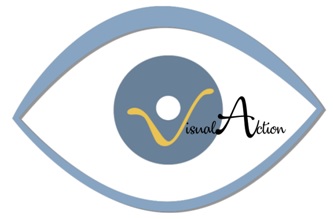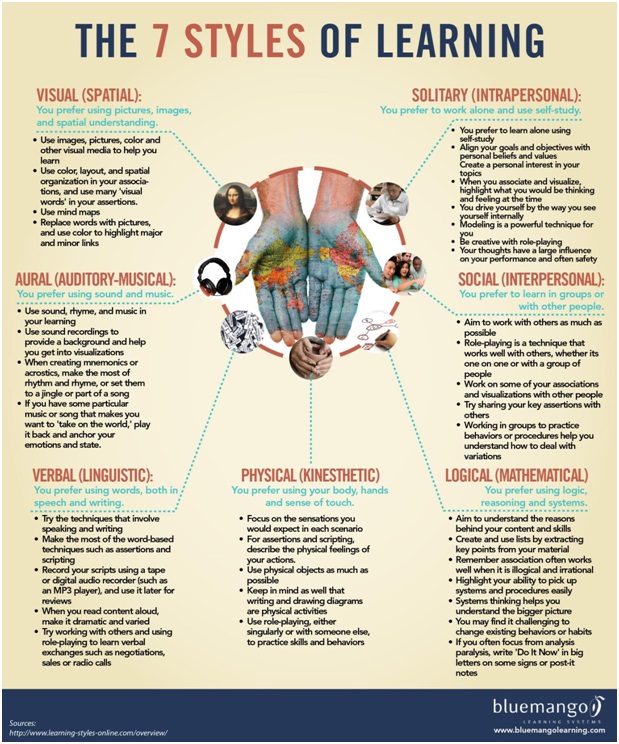A Coaching Model Created by Vanessa Frongillo
(Career Coach, SWITZERLAND)
The idea of the model
Visualization is about mental rehearsal or creating a mental picture.
When we interact with a story (like a book, film, video or speech) we get involved with emotions as if we could ‘live’ that moment in our mind, we visualize ourselves, the background, other characters, we feel the emotions inside us. This interaction between us and the story is possible thanks to our mind’s eye, which gives our brain the ‘vision’ of an image of what we are hearing, saying or feeling. Different areas of our brain are stimulated by the visualization. Nearly 75% of our brain’s sensorial neurons are elaborated through visual information.
Nowadays we live in a society where we are bombarded with information and the only visualization can help us to feel emotion: “In a world increasingly saturated with data and information, visualizations are a potent way to break through the clutter, tell your story and persuade people to action”. [1]
Storytelling is the visualization of our thoughts into words. When we start to think, the left part of the brain is activated and when we tell our story out loud, the right part is lit up. Both parts of the brain start to function and that means we feel emotions and produce serotonin, the chemical, and neurotransmitter related to happiness.
During our storytelling, we also talk about our beliefs and values. Sometimes we are blocked by our sense of fear of taking action and of following our desires and also our goals.
As a coach, I have met clients who want to obtain the strength to carry out his/her actions. They are often stopped by the fear of doing ‘something different’ even though they are looking to do ‘something different from their current situation which means reaching their ‘happiness’.
I have begun to propose the visualization techniques during the coaching sessions. And I can confirm that my clients have experienced the idea that the “impossible can seem possible and utterly compelling”[2], through the visualization they could ‘see’ the endpoint, to smell it, to taste it, to hear it and to feel it.
From my coaching experience, I developed my VisualAction Coaching Model.
The model

Looking at the model VisualAction, it is made up of two words and two images
The eye could have two perspectives:
I consider the visualization the most important skill of coaching to accompany the client to reach the action. At the same time, the client goes through the visualization of the desired perspective, using images, pictures, writings, paintings, and role-playing. The storytelling from the present (here and now) situation to the desired goal through an exploration of the needs, beliefs, and values of the client. Visualization helps to change the perspective and understand better what there is inside the client, go through the mind’s eye of the client by imagination, and, therefore, the client develops his/her self-understanding and awareness, as Goleman writes “emotional intelligence”[3]; the ability to recognize her/his emotions and know her/his own strengths and limits. Before taking action, the client needs to understand herself/himself and what there is to work in order to make changes with an action plan.
Creating action
Visualization is most widely used in coaching to create action and achieve the goal. Visualizing a ‘safe and comfortable zone’, the client leaves her/his fears behind, which is the emotion that stops you from taking action.
Planning and goal setting
“What’s the final result you are looking for” or “What will be different when you achieve your goal?”
These are some of the most powerful questions, helping the client to explore her/his ‘macro-outcome’ and look beyond her/his current thinking towards her/his desired outcome, “How will you know that you have achieved your goal?”
Language
Through the use of language and the exploration, the client changes his/her perspective: negative and blocking the content of storytelling will transform into a positive view.
The most important figure of speech used during visualization is the ‘metaphor that makes the connection between our current situation and the possible alternatives, giving the opportunity to have a different ‘point of view’.
Also, the use of willing verbs helps the client to move a thousand steps forward from her/his fearful situation to a positive and actionable situation.
Different profile of the learner
“Some worry because they don’t actually ‘see’ a mental picture or image when they close their eyes and try to visualize. … Don’t get stuck on the term ‘visualize’. It is not at all necessary to mentally see an image”[4] wrote Shakti Gawain, the pioneer of visualization in the field of personal development.
We continually use our imagination; each person has a process to go through in order to imagine and visualize and ‘see’ in their mind’s eye. The coach must understand the learning style of each client to start visualization techniques and also the assertion must be compatible with the learning style[5]:
Where to apply it?
Visualization can be used in different contexts, from solving problems in a big company to a client who wants to achieve a goal (e.g.how to change her/his work in order to feel happy).VisualAction Model is what I offer as a coach, a transformation and an active coaching model, which is a way to empower the storytelling of clients.
After my process of going through coaching sessions, I have experienced that the client:
Bibliography
Gawai, Shakti.Creative Visualization. Use the Power of Your Imagination to Create What You Want in Your Life. Novato, California: New World Library, Nataraj, 2002
Goleman, Daniel. Emotional Intelligence. Bantam, 1995.
Singer, Adam. Data Visualization: Your Secret Weapon in Storytelling and Persuasion. October 2014. Last visited on 17 January 2020,
International Coaching Association. Module: Visualization, in Coaching Skill. Last visited on 17 January 2020,
https://learnsite.icacoach.com/english-campus/coach-skills-course/visualization/
Attachment

[1] Singer, Adam. Data Visualization: Your Secret Weapon in Storytelling and Persuasion. October 2014. Last visited on 17 January 2020,
[2]International Coaching Association. Module: Visualization, in Coaching Skill. Last visited on 17 January 2020, https://learnsite.icacoach.com/english-campus/coach-skills-course/visualization/
[3]Goleman, Daniel. Emotional Intelligence. Bantam, 1995.
[4]Gawai, Shakti.Creative Visualization. Use the Power of Your Imagination to Create What You Want in Your Life. Novato, California: New World Library, Nataraj, 2002
[5]See the last page: The 7 learning styles of learning. Last visited on 17 January 2020
https://www.mpes.co.uk/media/pdf/7stylesoflearning.pdf